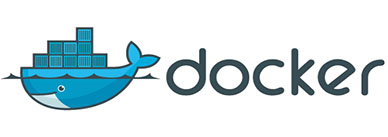How To Set Docker Environment Variables

In the world of containerization, Docker has emerged as a leading platform for developing, shipping, and running applications. One of the critical aspects of managing Docker containers is the use of environment variables. These variables allow developers to customize the behavior of their applications without hardcoding sensitive information directly into the codebase. This article will provide a comprehensive guide on how to set Docker environment variables, covering various methods, best practices, and troubleshooting tips.
Understanding Environment Variables in Docker
What are Environment Variables?
Environment variables are dynamic values that can affect the behavior of processes running on a computer. In the context of Docker, these variables are used to configure applications within containers. They can store configuration settings, API keys, database connection strings, and other essential information that your application may need at runtime.
Why Use Environment Variables with Docker?
Using environment variables in Docker has several advantages:
- Flexibility: Environment variables allow you to change application behavior without modifying the code.
- Security: Sensitive information can be kept out of source control by using environment variables instead of hardcoding them.
- Configuration Management: They help in managing different configurations for development, testing, and production environments.
Setting Environment Variables in Docker
Using the Command Line Interface (CLI)
Using the `-e` or `–env` Flag
The simplest way to set environment variables when running a Docker container is by using the `-e` or `--env` flag in the command line. Here’s how you can do it:
docker run -e VARIABLE_NAME=value image_nameFor example, if you want to set an environment variable called APP_ENV to production, you would run:
docker run -e APP_ENV=production my_app_imageYou can also set multiple environment variables by repeating the -e flag:
docker run -e APP_ENV=production -e DB_HOST=localhost my_app_imageUsing the `–env-file` Option
If you have many environment variables to set, using an `.env` file can simplify your command. An `.env` file is a plain text file containing key-value pairs of environment variables.
Create a file named .env with the following content:
# .env
APP_ENV=production
DB_HOST=localhost
DB_USER=root
DB_PASS=password123You can then reference this file when running your container:
docker run --env-file .env my_app_imageCombining `-e` and `–env-file`
You can combine both methods by using an `.env` file along with individual -e flags. This allows you to override specific variables defined in your `.env` file:
docker run --env-file .env -e DB_PASS=newpassword my_app_imageSetting Environment Variables in Dockerfiles
Defining Environment Variables with `ENV`
You can also set environment variables directly in your Dockerfile using the ENV instruction. This method makes these variables available during the build process and when running the container.
The syntax for setting an environment variable in a Dockerfile is as follows:
ENV VARIABLE_NAME valueAn example of setting an environment variable in a Dockerfile:
# Dockerfile
FROM node:14
ENV APP_ENV=production
ENV PORT=3000
COPY . /app
WORKDIR /app
RUN npm install
CMD ["node", "server.js"]This sets APP_ENV and PORT, which can be accessed by your application during runtime.
Using Build Arguments with `ARG`
The ARG instruction allows you to define build-time variables that can be passed at build time but are not available after the image is built. This is useful for parameters that should not persist in the final image.
The syntax for using ARG is similar to ENV, but you must specify it before using it:
# Dockerfile
FROM node:14
ARG NODE_VERSION=14
RUN npm install -g node@${NODE_VERSION}You can pass values for build arguments when building your image:
docker build --build-arg NODE_VERSION=16 -t my_node_app .Managing Environment Variables with Docker Compose
Setting Variables in `docker-compose.yml`
If you’re using Docker Compose to manage multi-container applications, you can define environment variables directly within your docker-compose.yml. Here’s how to do it:
# docker-compose.yml
version: '3'
services:
web:
image: my_web_app
environment:
APP_ENV: production
DB_HOST: db
db:
image: mysql:5.7
environment:
MYSQL_ROOT_PASSWORD: example_password
MYSQL_DATABASE: app_dbThis configuration sets up a web service and a database service with their respective environment variables.
Using `.env` Files with Docker Compose
You can also use an `.env` file with Docker Compose just like with standalone Docker commands. Create an `.env` file with your variable definitions:
# .env
APP_ENV=production
DB_HOST=db_server
DB_USER=root
DB_PASS=password123Your docker-compose.yml will automatically read these values when you start your services:
# docker-compose.yml
version: '3'
services:
web:
image: my_web_app
environment:
APP_ENV: ${APP_ENV}
DB_HOST: ${DB_HOST}Best Practices for Using Environment Variables in Docker
Security Considerations
Avoid hardcoding sensitive information such as passwords or API keys directly into your source code or Dockerfiles. Instead, use environment variables or secret management tools like HashiCorp Vault or AWS Secrets Manager to securely manage sensitive data.
Organizing Configuration
A well-organized approach to managing environment variables enhances readability and maintainability. Here are some tips:
- Naming Conventions: Use clear and consistent naming conventions for your environment variables (e.g., use uppercase letters and underscores).
- .env Files: Keep all related configuration settings together in an `
.env` file for easy management. - Docker Compose Files: Clearly document any important configurations within your `
docker-compose.yml` files.
Troubleshooting Common Issues with Docker Environment Variables
If you encounter issues with environment variables not being recognized within your containers, consider these troubleshooting tips:
- No Variable Found: Ensure that you have correctly defined the variable names and that there are no typos.
- .env File Issues: Check that your `
.env` file is correctly formatted (no spaces around equal signs) and is located in the same directory from which you’re running your commands. - Dockerfile Context: Remember that build arguments defined with `
ARG` are not available at runtime unless explicitly set as `ENV`. Ensure you’re using them appropriately. - Docker Compose Interpolation: Ensure that you’re referencing environmental variables correctly within your `
docker-compose.yml`. Use `${VARIABLE_NAME}` syntax for interpolation.